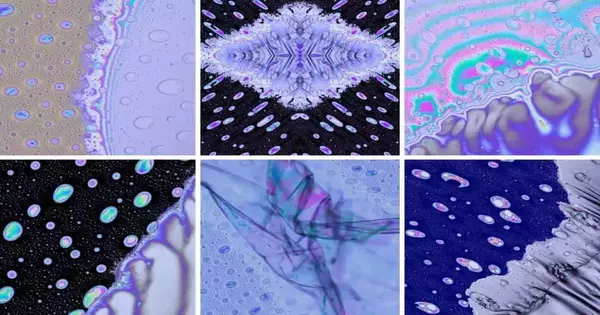A breakthrough in synthesis methodology makes it simple to create inorganic membranes that are both energy-efficient and highly customizable, potentially revolutionizing many industries’ business practices for greater sustainability.
You can think of inorganic membranes as sieves for a kitchen. Inorganic membranes, which are typically made of ceramics or metals, selectively separate molecules based on their size and properties, similar to how sieves separate smaller particles from larger ones.
In a ground-breaking accomplishment, a research team from the College of Design and Engineering (CDE) at the National University of Singapore, under the direction of Professor Ho Ghim Wei from the Department of Electrical and Computer Engineering, has created a ground-breaking method for creating ultrathin inorganic membranes. An important development in membrane technology is the ability of these freestanding membranes to function without a supporting substrate. On March 29, 2023, the team’s findings were released in the peer-reviewed journal Nature.
“Our research has also enabled us to take a fresh approach to rethinking how inorganic membranes are normally generated,”
Professor Ho Ghim Wei from the Department of Electrical and Computer Engineering,
The inorganic membranes—supported by a universal, simple synthesis strategy—have the potential to be useful for applications other than filtration and separation because of their high adaptability and ease of production. Due to their versatility, membranes have the potential to revolutionize a number of sectors and industries that rely on membrane technology, including sensing, catalysis, and energy conversion. New opportunities for overcoming energy challenges in the face of climate change have been made possible by the NUS scientists’ groundbreaking research, which supports sustainability and efficiency in industrial processes.
Reimagined membranes.
Conventional membrane technologies are known to be expensive and energy-intensive, requiring pressure, heat, and occasionally chemicals to operate properly. They are frequently used in purification and separation processes. Additionally, the membranes must be renewed, and the filtered components typically need additional processing after separation, which increases energy usage and costs.
These drawbacks of conventional membrane technologies gave Dr. Zhang Chen, a postdoctoral research fellow on Prof. Ho’s team, the inspiration to create a novel synthesis method for extremely effective inorganic membranes. In order to create the desired membrane, Dr. Dot Zhang’s technique involves taming chaotic, free-floating, inorganic building blocks in a liquid environment. For maximum energy efficiency, this tunable process offers a practical way to modify the pore characteristics and thickness of the membrane for particular applications.
Dr. Dot Zhang continued, “Our study has also allowed us to take a fresh approach to rethink how inorganic membranes are typically developed.”
The NUS scientists have provided a synthesis template that other researchers can use in their work. This could encourage the discovery of more novel membranes with a wider compositional range in a scalable and economical manner.
The membranes they created, from a structural standpoint, are more diverse geometrically than conventional ones, giving designers of membrane structures more flexibility and options.
The research also looks into membrane functionality, where highly selective 2D barriers are used to regulate energy flow across the membrane. This characteristic might affect how the membrane works by allowing ions to be filtered based on their charge, different types of energy to be harnessed, such as thermal, electrical, or light energy, or the selective concentration of particular molecules. In many energy-related applications, such as fuel cells and solar energy conversion, such flexibility is highly desirable.
According to Prof. Ho, “Our new method has the potential to transform industries that heavily rely on membranes for their operation, especially those related to energy or the environment.”. “The ability to fabricate highly selective freestanding inorganic membranes opens up a wide range of fascinating applications in advanced spatial dynamic separation, catalysis, sensors, memories, and ionic conductors, all of which are novel advancements.”.
Making plans for a greener future.
The researchers’ innovation, which places a strong emphasis on efficiency and customization, is crucial to NUS’ sustainability initiatives because it significantly lowers the energy consumption of membrane-related processes globally and, as a result, the carbon footprint of various industries.
Prof. Ho intends to head an interdisciplinary team of researchers in a multifaceted research program to advance membrane technology to the next level, motivated by the potential of the breakthrough. “We hope to unlock new applications and make further advancements towards a more sustainable future by exploring the wide range of membrane compositions and coupling them with various forms of energy,” said Prof. Ho.
Ultimately, the team hopes to make their technology more widely available by creating automated manufacturing tools to accelerate the production of inorganic membranes.
More information: Chen Zhang et al, Mechanistic formulation of inorganic membranes at the air–liquid interface, Nature (2023). DOI: 10.1038/s41586-023-05809-y





